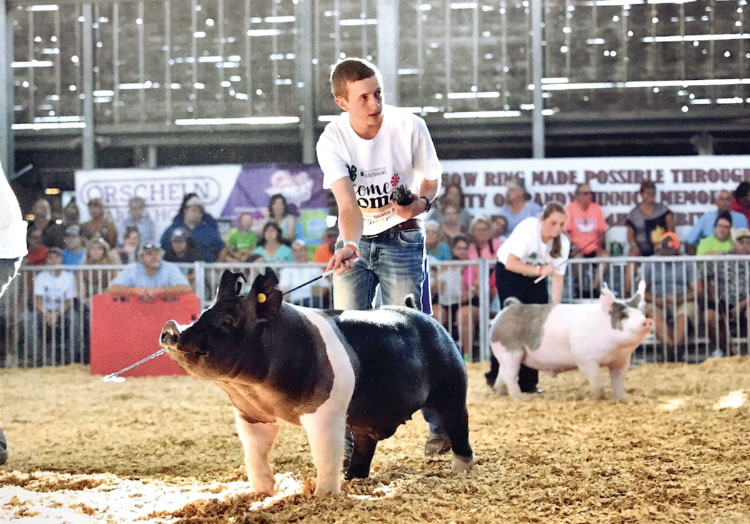
Livestock sales have been a mainstay in the world of agriculture for over a century, providing farmers and ranchers an avenue to sell or purchase livestock in a controlled setting.
One such venue is the T.S. Whites Sale Barn located north of Diamond, Mo. The facility has been owned by the White family for 15 years. But for Tim and Suzanne White, taking over as the main ram-rods began five years ago.
Make no mistake, Tim and Suzanne White are no strangers to the livestock sales business. In fact, the beginnings can be traced back to Tim’s father, Cecil, who has been in the horse sales business for more than 40 years. But it was approximately 12 years ago that horse sales began to decline and the family looked to diversify into other markets.
Although Cecil is now retired, he still has the itch to attend sales, but on the other side of the sale ring as a buyer.
Both Tim and Suzanne say the nature of livestock sales in the auction setting, such as theirs, has been driven by ever changing trends in the last decade or so. Two positive trends have begun to bring new customers to the sales arena.
“The sheep and goat market has really been pretty steady and actually grown over the last several years,” Tim said.
“We are seeing more people who want to grow their own food coming to our auctions for the first time,” Suzanne added. “We have also seen an increase in sheep and goat numbers for youth in 4-H.”
This does not hinder the sales at the barn, as many come to find an animal for their hobby farm or for a child just beginning in 4-H. The couple notes that while their monthly horse sale draws the most spectators and about 75 head, it’s the sheep, goat and caged animal auction that generates the most sales.
“When you consider the average price for a good cow is about $1,500, but they could buy about 10 good nanny goats for about $125 each and come out ahead,” Tim said.
For folks just starting out, smaller livestock provide a good preview to livestock production because they are fairly easy to care for, do not require expensive equipment to manage, require less space to raise and are more hands on than cattle.
“On average, we see about 125 sellers bring about 10 or more head to our sale, totaling about 1,200 to 1,600 each month,” Tim said. “Some come 150 to 200 miles to buy or sell sheep or goats.”
In fact, White’s sheep and goat is one of the largest in the four state area, with the only comparable auction being in St. Joseph, Mo., so much so that it can be found in the USDA’s monthly market report.
Sheep and goats are booming due to their popularity in different cultures, but most do not attend auctions because the process is unknown to them or there is a language barrier.
The couple notes that they never really know what might come into the sale barn.
“We’ve had chickens, ferrets, finches, rabbits and even rats come in to be sold,” Tim laughs. “We’ve even had pots and pans but we don’t want to get items like that started.”
Another popular sale is the draft horse sale that draws people from all over. The two-day sale features buggies, tack, harnesses and other equipment the first day and the actual draft horse sale on Saturday. This year’s sale will be held Sept. 16-17.
The regular horse sale is held the second Tuesday, and the sheep, goat, pig and caged animal sale is the first Thursday of each month, starting at 4 p.m.







